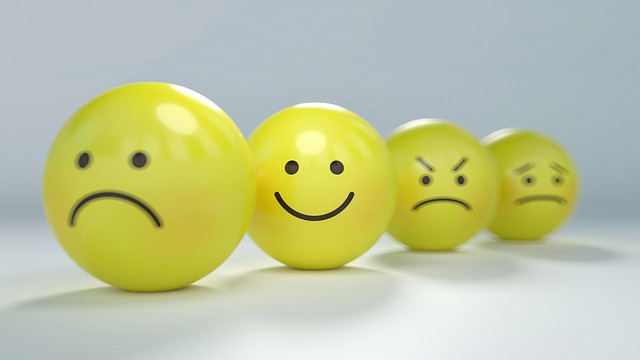Color Psychology in Branding for 2024
Color isn’t just aesthetic—it’s strategic. In vlogging and digital branding, the colors you choose help send subconscious signals to your audience about your message, tone, and identity. In 2024, smart creators are leaning into color psychology to elevate their visual presence.
What Each Color Says About Your Brand
Different colors evoke different emotional reactions. Here’s a breakdown of the most common hues you’ll see in creator branding—and what they actually communicate:
Red
- Symbolizes urgency, passion, and energy
- Frequently used by fast food brands and retail companies to trigger quick action
- Ideal for CTAs, sale promotions, and giving your visuals a bold pop
Blue
- Represents trust, calm, and professionalism
- Common in finance, healthcare, and tech industries
- Works well for creators building long-term credibility or authority
Green
- Associated with health, balance, and eco-awareness
- Often used by wellness, outdoor, and sustainability-focused creators
- A go-to color when promoting natural or holistic content
Yellow
- Radiates optimism, happiness, and youthfulness
- Commands attention—but can overwhelm if overused
- Great for thumbnails or energetic visuals
Black/Grey
- Conveys luxury, authority, and formality
- Common in fashion, tech, and premium lifestyle niches
- A strong choice for minimalist designs and upscale branding
Purple
- Linked to creativity, wisdom, and a premium touch
- Used by coaches, educators, and high-end digital products
- Balances inspiration with sophistication
Global Nuance: Color Isn’t One-Size-Fits-All
It’s critical to remember that color meanings can shift across cultures. What represents prosperity in one culture might symbolize mourning in another. For example:
- White is purity and weddings in Western cultures, but often associated with mourning in some Eastern traditions.
- Red signifies luck and celebration in Chinese culture, while representing danger or alerts in Western design.
Pro Tip: If you’re targeting an international audience, do a quick sense-check on your color palette. Small shifts can make a massive difference in how your visuals are received.
Using color intentionally means choosing hues that resonate with your brand and your audience.
In 2024, it’s not just about standing out—it’s about signaling clarity, consistency, and connection.
Color hits fast. Before someone reads a word or hears a pitch, they’ve already made a snap judgment—based mostly on what they see. That’s the power of color. It shapes perception, triggers emotions, and drives decisions in under a second.
The brain doesn’t wait. When we process color, it cuts straight to the limbic system—the part linked to feelings, memories, and motivation. It’s one of the reasons a blue logo feels trustworthy, why red signals urgency, and why green implies health or sustainability. This isn’t marketing fluff. It’s basic neurology.
Brands have leaned hard into color psychology because it works. Think about McDonald’s yellow arches, Spotify’s electric green, or Tiffany’s signature blue. These choices aren’t random. They’re tested, intentional, and built for recognition. In a feed-scrolling world, color gets the first—and maybe only—impression. That’s why getting it wrong misses more than aesthetics. It misses the connection.
How Color Builds Brand Identity and Consistency
Color isn’t just a design choice—it’s a shortcut to memory, emotion, and brand recall. The most successful brands use color not simply as decoration, but as a strategic asset. When applied with consistency across logos, packaging, and even content visuals, color becomes a marker of identity. It tells people who you are before they read a word.
Take Coca-Cola. That deep, unmistakable red has anchored the brand for over a century. Or Tiffany & Co.’s robin’s-egg blue—so iconic the company trademarked it. These brands didn’t just choose a color. They claimed it, saturated their presence with it, and built recognition that transcends language.
This is where color psychology comes in. Red can trigger urgency or excitement (hence Coca-Cola), while blue often signals trust and calm (think PayPal or Facebook). Green leans into eco-friendliness or growth. When combined with smart logo design and packaging, color makes a brand easy to remember and hard to mistake.
For vloggers and creators, the lesson is clear: don’t underestimate the emotional pull of your color palette. Whether it’s your channel banner, thumbnail tones, or video overlays, pick colors that match your message—and stick with them. Over time, your audience won’t just watch your content. They’ll recognize your brand with a glance.
Color Strategy: Testing, Evolving, and Building for Impact
Color isn’t just aesthetic—it’s strategic. Whether you’re designing ads, revamping a user interface, or evolving your brand’s image, color choices can deeply affect performance, perception, and engagement.
A/B Testing for Color Performance
Want to know if switching that button from blue to red will increase conversions? Don’t guess—test.
Common Areas to A/B Test:
- Call-to-action buttons: Test color variations to see which drives more clicks or conversions.
- Ad backgrounds and overlays: Color can affect attention and emotion.
- Navigation elements: Especially important in mobile UX where clarity is key.
Tips for Effective A/B Testing:
- Change one color element at a time to isolate variables
- Run tests with statistically significant sample sizes
- Track metrics like CTR, bounce rate, and time on page
When to Change Your Brand’s Visual Identity
Changing your brand’s color palette—or visual identity more broadly—isn’t just a design decision. It’s a major strategic move.
Situations That Might Call for a Shift:
- A target audience has changed: New demographics may respond better to different schemes
- The brand is expanding into new markets: Colors hold different meanings across cultures
- Current visuals feel outdated or inconsistent: Refreshing may signal innovation
Risks:
- Alienating loyal users who associate your brand with its original look
- Diluting brand recognition if changes are too drastic or poorly timed
Rewards:
- Increased engagement and relevance
- Better alignment with changing user needs or business goals
Tips and Tools for a Cohesive, Flexible Palette
Creating a color palette isn’t just about choosing a few pleasing shades. It’s about building a toolkit that scales across platforms and use cases.
Guidelines for a Versatile Palette:
- Establish a primary and secondary system: This ensures flexibility while maintaining consistent branding
- Use neutral tints strategically: These help balance bolder, branded colors across different environments
- Plan for accessibility: Ensure good contrast ratios and color blindness-friendly combinations
Recommended Tools:
- Coolors or Adobe Color: For palette generation and trend exploration
- Stark (Figma plugin): For checking accessibility within UI design
- Design systems like Material Design or TailwindCSS: Great references for scalable color systems
A smart color strategy goes far beyond aesthetics. It’s about creating consistency, improving usability, and driving better business outcomes. Test wisely, change carefully, and build with intent.
Color isn’t just about looking good—it’s about triggering something. Age, gender, and cultural context all shape how people read color. Younger viewers might gravitate toward bold neons or pastel gradients. Older demographics lean more toward understated tones—think blues, earthy hues, neutral palettes. Style choices that hit in Tokyo might not land the same in Minneapolis. Knowing your audience’s visual language isn’t fluff; it’s strategy.
Then comes the line between industry standard and standing out. Beauty vloggers tend to live in pinks and creams. Tech channels often wear blacks, blues, and clean whites. There’s nothing wrong with aligning to your category—consistency helps people find you. But when the space gets crowded, color is one of the easiest ways to stand out. If your fitness vlog serves high-intensity chaos, maybe your brand red should punch a little harder.
Accessibility also matters. High-contrast visuals help people with limited vision. Poorly chosen palettes alienate viewers—subtle shade differences might look fine to you but can be unreadable to someone colorblind. Good branding these days isn’t just cool, it’s inclusive. Great vloggers build identity with color, but smart ones make sure everyone can see it.
Color Isn’t Random, It’s Strategic
In vlogging today, color is more than aesthetics—it’s a signal. Your color palette tells viewers what kind of ride they’re in for before you even speak. And in a feed full of noise, that matters.
Being consistent doesn’t mean being boring. It means having a look people recognize instantly. Think Casey Neistat’s red and black title cards, or the subtle but persistent pastel glow in a lifestyle vlogger’s world. Colors connect. They tell a story before the first second plays.
The smart move isn’t chasing color trends—it’s anchoring your visuals in your brand’s truth. Is the vibe gritty and real? Muted earth tones. Is it vibrant, upbeat, Gen Z core? Think bold, punchy primaries. The secret isn’t picking colors—it’s picking the right ones for your story and sticking to them.
Want to go deeper? We talk about this and more in Why Storytelling Is the Heart of Successful Brands.


 Nicole Kennedyelar played a pivotal role in shaping the foundation of FLP Stampive, contributing her creative insight and strategic thinking to the platform’s development. With a strong background in digital content creation and audience engagement, Nicole helped craft the site’s tone, structure, and visual appeal. Her attention to detail and passion for modern marketing made her an essential part of the team, ensuring that every element of FLP Stampive aligned with its mission to inform and inspire marketing professionals worldwide.
Nicole Kennedyelar played a pivotal role in shaping the foundation of FLP Stampive, contributing her creative insight and strategic thinking to the platform’s development. With a strong background in digital content creation and audience engagement, Nicole helped craft the site’s tone, structure, and visual appeal. Her attention to detail and passion for modern marketing made her an essential part of the team, ensuring that every element of FLP Stampive aligned with its mission to inform and inspire marketing professionals worldwide.